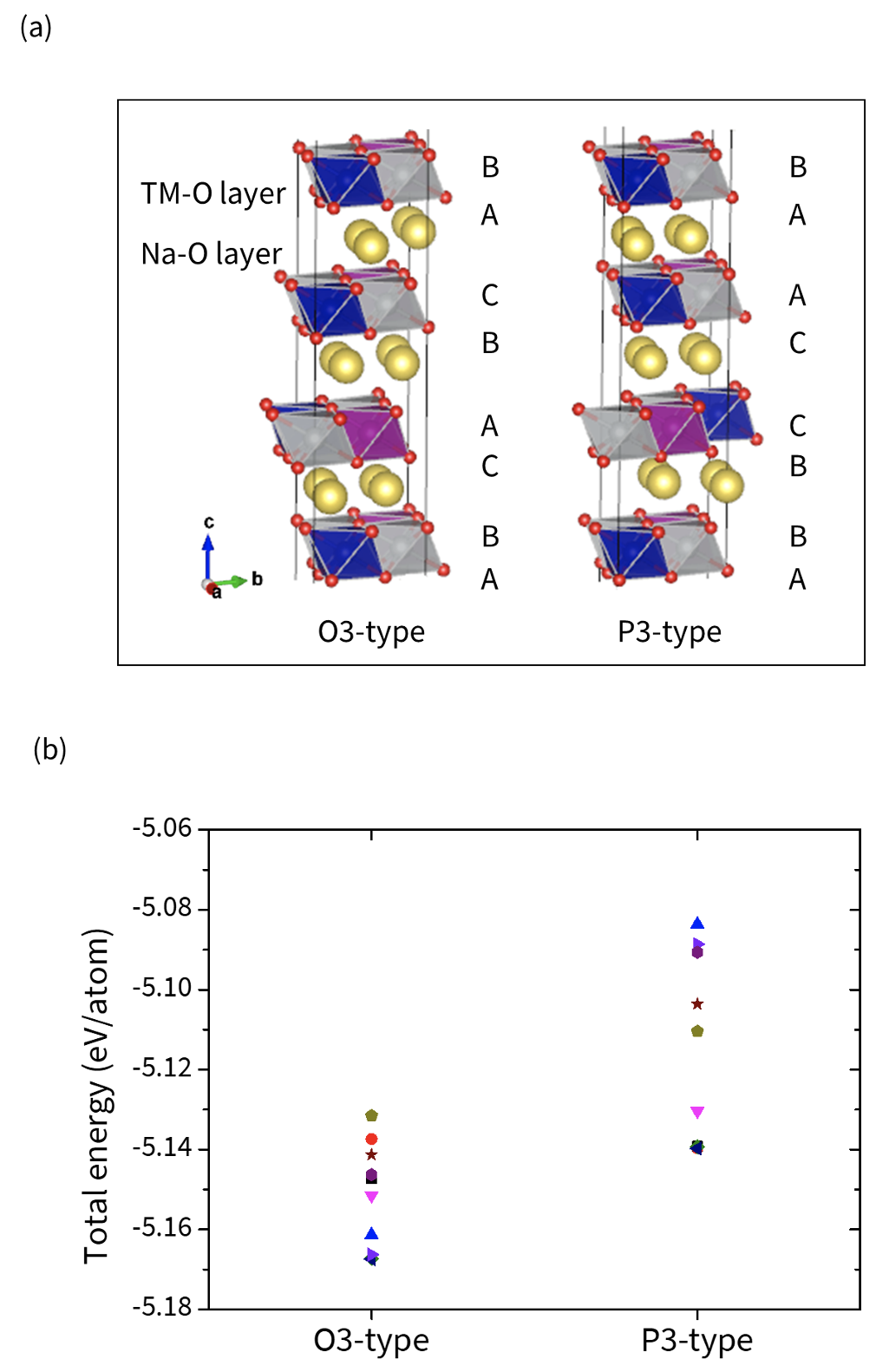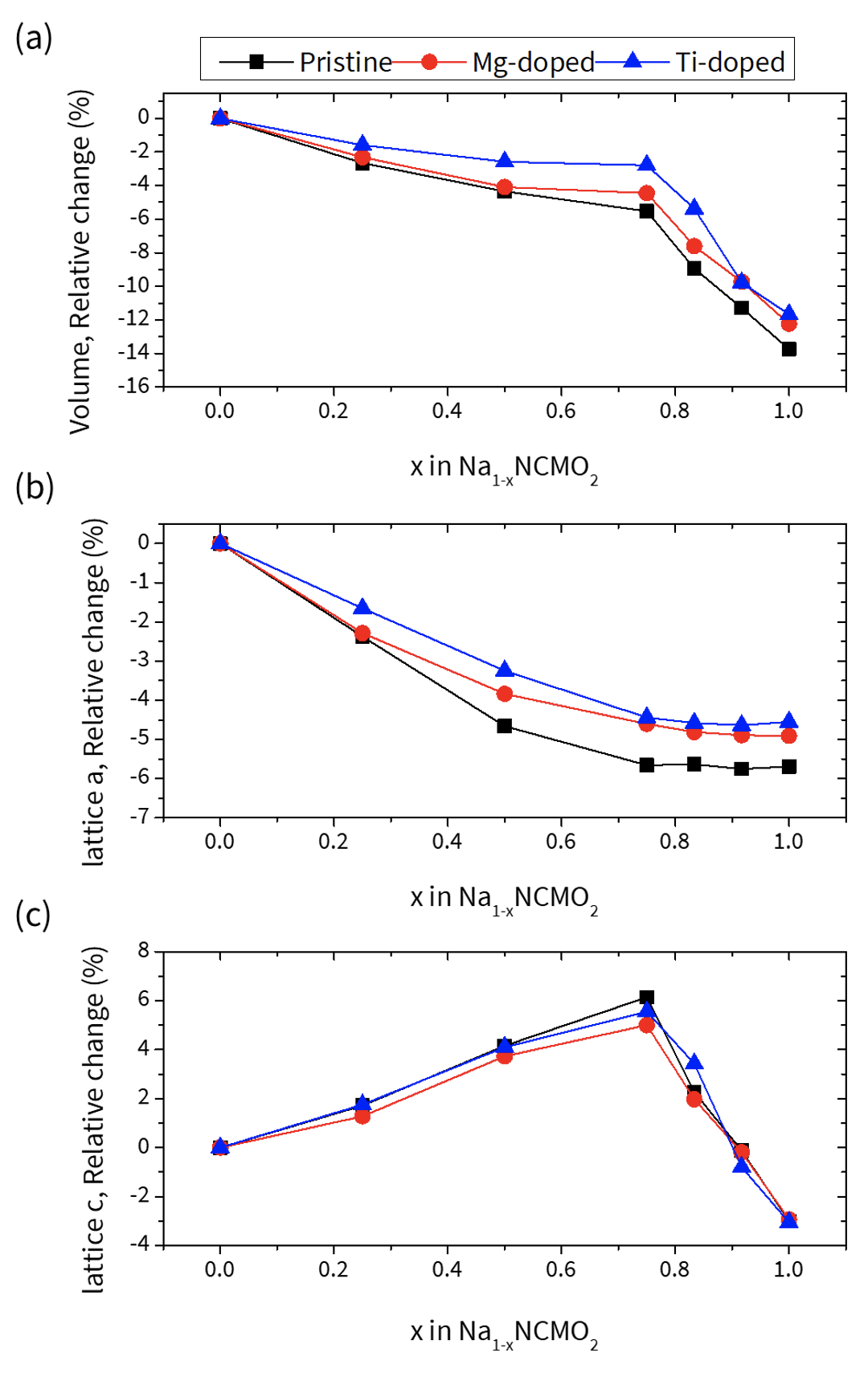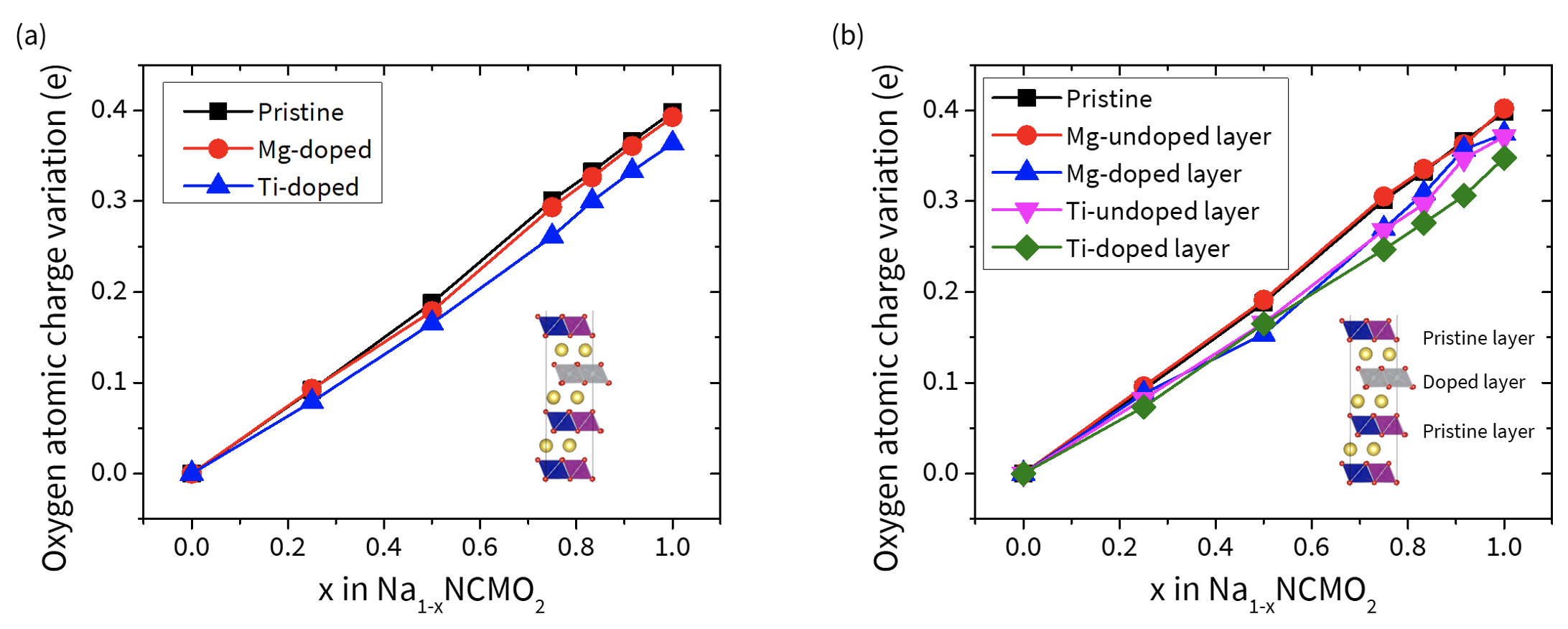Back To Listings



- First authors: Kyoungmin Min
- Corresponding authors: Kyoungmin Min, Young-Han Shin
- Whole authors: Kyoungmin Min, Young-Han Shin
- Authors from M3L: Young-Han Shin
Prevention of the degradation of sodium-based layered cathode materials is the key to developing high-performance and high-stability sodium-ion batteries. In this study, the working mechanism of Mg and Ti dopants in mitigating degradation was investigated through the use of first-principles calculations. More specifically, the effects of each dopant in suppressing the phase transition, lattice expansion and shrinkage, and possible oxygen generation during repeated charging and discharging processes were validated. The results showed that the pristine structure exhibits irreversible O3–P3 phase transition after 75% desodiation, while doping with Mg or Ti effectively delays this transition. In addition, the change in lattice parameters as well as in the volume during desodiation was investigated. It was found that both dopants reduce the magnitude of structural change, which potentially improves the structural stability. Furthermore, introducing the dopants increases the thickness of the Na diffusion channel, possibly leading to an enhanced rate capability. Finally, the oxygen atomic charge variation during charging indicated that doping can enhance the oxygen stability by reducing the initial charge of oxygen as well as its increase during desodiation.
Authors from M3L




